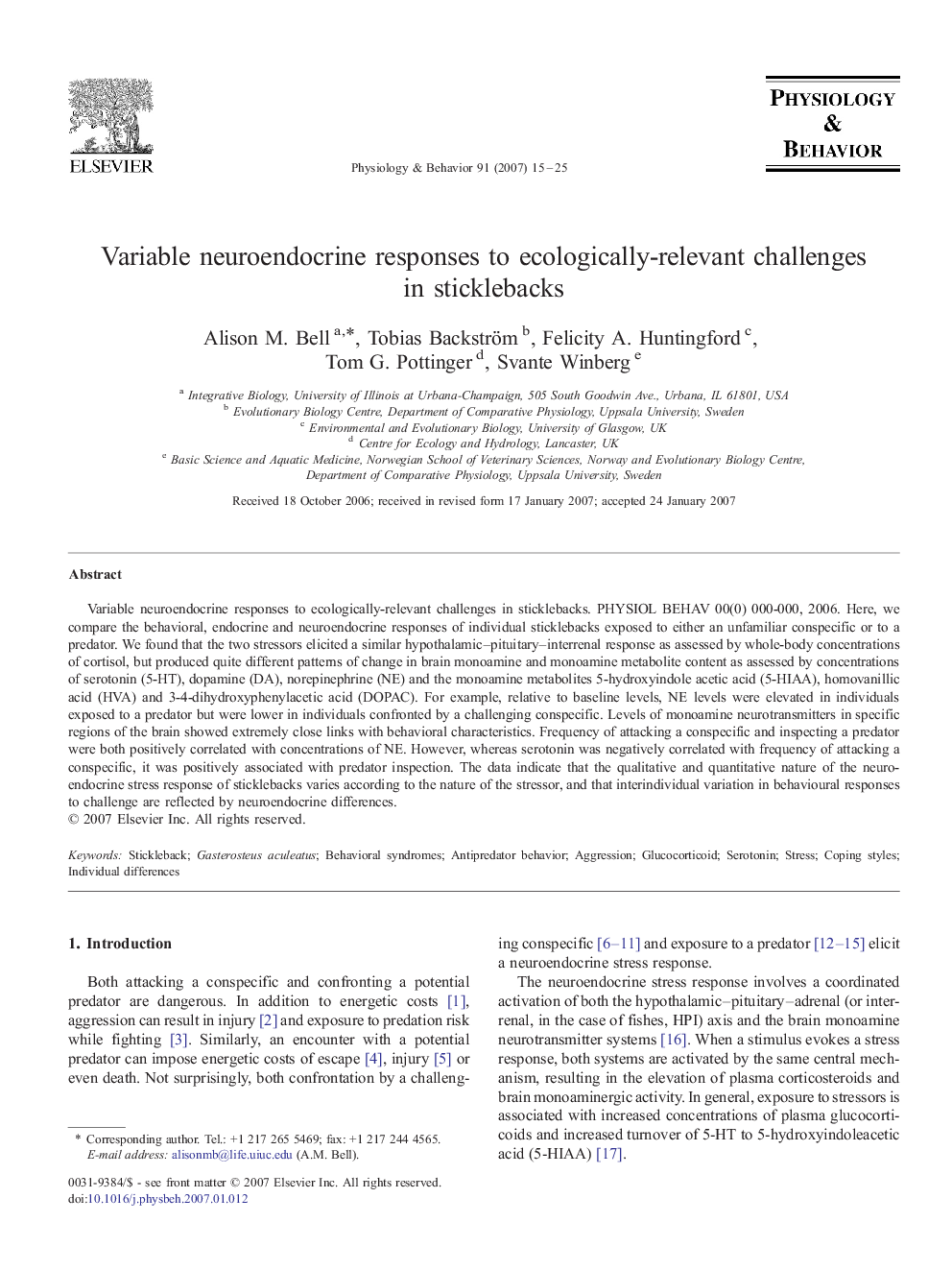| Article ID | Journal | Published Year | Pages | File Type |
|---|---|---|---|---|
| 2846096 | Physiology & Behavior | 2007 | 11 Pages |
Variable neuroendocrine responses to ecologically-relevant challenges in sticklebacks. PHYSIOL BEHAV 00(0) 000-000, 2006. Here, we compare the behavioral, endocrine and neuroendocrine responses of individual sticklebacks exposed to either an unfamiliar conspecific or to a predator. We found that the two stressors elicited a similar hypothalamic–pituitary–interrenal response as assessed by whole-body concentrations of cortisol, but produced quite different patterns of change in brain monoamine and monoamine metabolite content as assessed by concentrations of serotonin (5-HT), dopamine (DA), norepinephrine (NE) and the monoamine metabolites 5-hydroxyindole acetic acid (5-HIAA), homovanillic acid (HVA) and 3-4-dihydroxyphenylacetic acid (DOPAC). For example, relative to baseline levels, NE levels were elevated in individuals exposed to a predator but were lower in individuals confronted by a challenging conspecific. Levels of monoamine neurotransmitters in specific regions of the brain showed extremely close links with behavioral characteristics. Frequency of attacking a conspecific and inspecting a predator were both positively correlated with concentrations of NE. However, whereas serotonin was negatively correlated with frequency of attacking a conspecific, it was positively associated with predator inspection. The data indicate that the qualitative and quantitative nature of the neuroendocrine stress response of sticklebacks varies according to the nature of the stressor, and that interindividual variation in behavioural responses to challenge are reflected by neuroendocrine differences.
